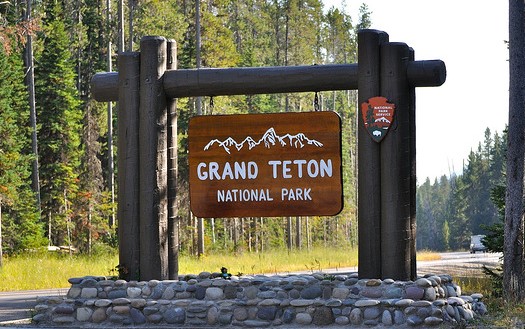
Last month marked the centennial of the National Park Service, which is tasked with preserving natural and cultural resources and protecting outdoor spaces for recreation, like Yellowstone, the Grand Canyon, and Yosemite. The most recently designated park is an ocean park where 4,900 square miles of deep sea volcanoes and canyons in the Atlantic ocean are now prohibited from commercial fishing and other types of resource extraction. While the idea behind the national park system is that everyone should be able to enjoy nature, the reality is that the working class and people of color are less likely to use national parks and the history of the parks has involved the displacement and exclusion of Native American, African American and immigrant communities.
Unequal access to resources – including money for entrance fees and transportation, equipment for exploring the parks, and leisure time – have resulted in race and class differences in who can actually enjoy the national parks.
- Jason Byrne and Jennifer Wolch. 2009. “Nature, Race, and Parks: Past Research and Future Directions for Geographic Research.” Progress in Human Geography 33(6): 743–65.
- Paul H. Gobster. 2002. “Managing Urban Parks for a Racially and Ethnically Diverse Clientele.” Leisure Sciences 24(2): 143–59.
- Myron Floyd. 1999. “Race, Ethnicity and Use of the National Park System.” NPS Social Science Research Review 1(2): 1–24.
Beyond access, there are a variety of cultural definitions of “the wilderness,” “the outdoors,” and recreation that are shaped by race. Racial norms and ideologies impact how people perceive leisure time and values of natural beauty, and activities like hiking and camping are often seen as “white hobbies.” Yet, these differences are largely due to a history of exclusion, discrimination, and segregation that kept people of color from using public outdoor space, particularly in the Jim Crow South.
- Cassandra Y. Johnson, Patrick M. Horan, and William Pepper. 1997. “Race, Rural Residence, and Wildland Visitation: Examining the Influence of Sociocultural Meaning.” Rural Sociology 62(1): 80–110.
- Cassandra Y. Johnson. 1998. “A Consideration of Collective Memory in African American Attachment to Wildland Recreation Places.” Human Ecology Review 5(1): 5–15.
- Dorecetta Taylor. 1989. “Blacks and the Environment: Towards an Explanation of the Concern and Action Gaps Between Blacks and Whites.” Environment and Behavior 21(2): 175- 205.
The parks themselves were created through colonialism, as much of the land that is now “protected” was of course taken from Native Americans. The idea of a pristine wilderness is historically linked to white racial purity and the need for Europeans to save the land, which justified U.S. expansion into the West. The conservation movement was also led by white men, such as John Muir, who often overlooked the struggles of racial minorities and issues of equity.
- Mark David Spence. 1999. Dispossessing the Wilderness: Indian Removal and the Making of the National Parks. Oxford; New York: Oxford University Press.
- Mark Daniel Barringer. 2002. Selling Yellowstone: Capitalism and the Construction of Nature. Lawrence, Kan: University Press of Kansas.
- Dorcetta Taylor. 2016. The Rise of the American Conservation Movement: Power, Privilege, and Environmental Protection. Durham, NC: Duke University Press.

Comments